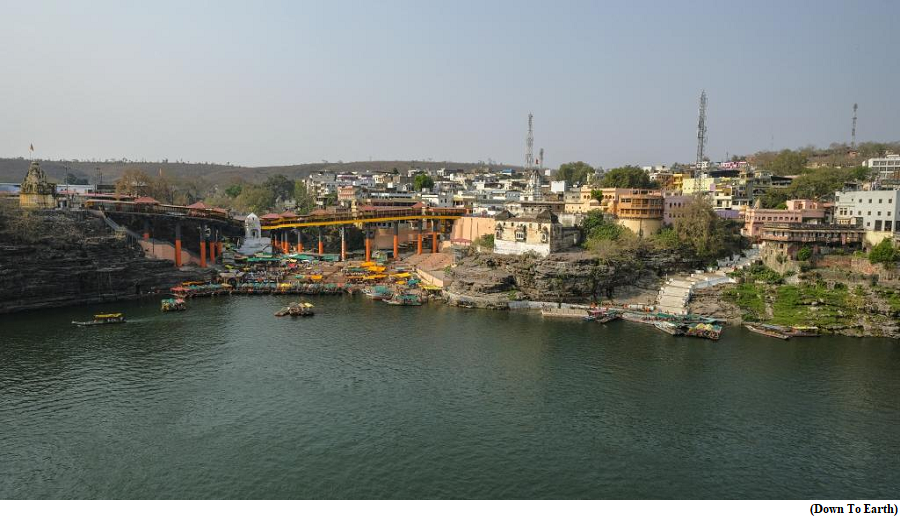Octopus DNA hides big secret about Antarctic doomsday (GS Paper 3, Science and Technology)

Why in news?
- Scientists have discovered through DNA analysis that the Turquet's octopus (Pareledone turqueti), residing in the Weddell and Ross Seas, were not always separated by the vast expanse of ice that now divides them.
Details:
- This genetic connection points to a time approximately 1,25,000 years ago when the colossal West Antarctic Ice Sheet (WAIS), which currently stands at an immense 2.2 million cubic kilometers, had completely disintegrated into the ocean.
- The evidence of gene flow between these two octopus populations around 70,000 years ago suggests that ancient seaways once bridged what is now an icy barrier.
- The implications of this discovery are profound, as they indicate that the WAIS has collapsed under past climate conditions similar to today.
Instability of the WAIS:
- For decades, scientists have grappled with the potential instability of the WAIS. Some early warnings of disaster date back half a century, while more recent climate models from just a decade ago failed to predict significant ice loss within the century, a prediction that has proven to be alarmingly inaccurate.
- Currently, West Antarctica is shedding massive icebergs at an unprecedented rate, dwarfing the ice loss of other continental regions.
- The Thwaites Glacier, ominously nicknamed the 'Doomsday Glacier,' is particularly concerning. If it were to collapse, it alone could contribute to a sea level rise of 65 centimeters.
Human induced catastrophe:
- The historical collapses of the WAIS were part of Earth's natural climatic cycles, not induced by human activity. Today, however, the rapid global warming caused by human emissions during what should be a cooler period for the planet raises the stakes significantly.
- If human-induced global warming leads to the collapse of the entire WAIS, the consequences would be catastrophic. Scientists estimate that such an event could raise global sea levels by 3.3 to 5 meters, disrupt oceanic water circulation, and dramatically alter the world's coastlines.
- While researchers consider a complete collapse of the WAIS on a centennial timescale to be unlikely, even optimistic climate models project air temperatures to reach 1.2 to 1.7 degree Celcius by 2100.
- This temperature range eerily mirrors the conditions under which the WAIS previously collapsed, suggesting that we may be nearing a tipping point.
Way Forward:
- The study points to the urgent need to address climate change and its potential to reshape our world dramatically.
Peninsular river basins in India more likely to face widespread flooding than Transboundary Rivers, Study
(GS Paper 3, Environment)
Why in news?
- River basins in peninsular India face a higher probability of widespread flooding compared to the Ganga and Brahmaputra, according to a new study published.

Details:
- Narmada basin has the highest probability (59 per cent) of widespread flooding, followed by Mahanadi (50 per cent), Godavari (42 per cent), Krishna (38 per cent) and Cauvery (19 per cent).
- As for transboundary river basins, Ganga and Brahmaputra have a probability of 21 per cent and 18 per cent, respectively.
- Widespread flooding causes enormous losses and damages compared to localised flooding, as it covers a large part of a river basin.
Basis of research:
- The researchers from the Indian Institute of Technology Gandhinagar analysed the occurrence of widespread floods in seven major river basins in the Indian subcontinent, such as Ganga, Brahmaputra, Godavari, Krishna, Mahanadi, Narmada and Cauvery in 1959-2020.
- With 40 events in the period, the Mahanadi and Narmada river basins had the highest frequency of widespread floods, the analysis showed.
- Krishna and Godavari basins witnessed more than 20 widespread floods, while Ganga, Brahmaputra and Cauvery basins saw less than 15 events in the period.
Key Highlights:
- They also found strong seasonal trends in widespread flood probability in the subcontinental river basins. For example, during the summer monsoon season, all seven river basins, except Cauvery, experienced widespread flooding in August.
- Godavari, Mahanadi and Narmada basins recorded widespread flooding in July, August and September.
- The trend of seasonality is also tied to rainfall. India receives around 80 per cent of the total annual precipitation during the summer monsoon season from June-September.
- Godavari, Mahanadi, and Narmada basins lie in the core monsoon region and receive more rainy days in July to September, the findings showed.
- The Cauvery faces flooding in October-December, as most of the river’s subbasins receive rainfall during the northeast monsoon season.
- The Brahmaputra river basin experienced widespread floods during June-July as the northeast region receives rainfall earlier compared to north Indian states.
Factors responsible:
- The researchers also looked at the drivers of widespread flooding. The 2018 Kerala floods, 2022 Pakistan floods and lower Mississippi river floods in 2008, 2011 and 2015–19 have been linked with atmospheric rivers that usually carry moisture from the tropics to the extratropics.
- Atmospheric rivers are large sections of the Earth’s atmosphere carrying water vapour through the sky.
- Widespread floods in India are associated with large atmospheric circulations that cause precipitation in the river basin, the study noted.
- The drivers of widespread floods are expected to alter the timing, occurrence, and probability of widespread floods in a warming climate.
Red Sea sees sharp rise in missile attacks, says IFC-IOR
(GS Paper 2, International Relation)
Why in news?
- The Red Sea region has witnessed a significant surge in maritime security incidents, including missile attacks over the past two months, with the week from December 14 to 20 reporting the highest number of incidents in this period.
- According to data released by the Gurugram-based Information Fusion Centre - Indian Ocean Region (IFC-IOR), there were nine maritime security threats recently, a stark increase from the previous weeks.

Causes:
- The primary cause behind this escalation appears to have been the uptick in Houthi attacks originating from Yemen.
- The Houthi rebels have been targeting vessels they suspect are heading to or from Israel, a response to Israeli actions in Gaza. Israel's substantial offensive in Gaza was triggered by a terror attack by Hamas in October.
- The trend of rising security concerns continued from the week of November 30 to December 6, where five incidents were recorded.
Recent instances:
- On December 13, the tanker Mt Ardmore Encounter faced a missile attack from Yemen's Hodeidah, with two missiles being launched.
- Simultaneously, a US Navy ship successfully intercepted an unmanned aerial vehicle near Port Hodeidah.
- On December 14, MV Maersk Gibraltar became the target of a ballistic missile attack north of the Bab el Mandeb strait.
- Fortunately, the missile exploded nearby, ensuring the safety of both the crew and the vessel. Two incidents unfolded on December 15, involving projectiles hitting vessels. MV Al Jasrah was struck by a projectile, and concurrently, MSC Palatium III was hit by a missile, both incidents originating from the Yemen region. In both cases, all crew members were reported safe.
- On December 16, a US Navy ship took down 14 unmanned aerial vehicles in the Red Sea off the coast of Yemen, while a UK Navy ship shot down another UAV off the Yemen coast.
- On December 18, MT Swan Atlantic faced a projectile attack resulting in an explosion on the port quarter of the vessel.
- Similarly, MSC Clara reported an explosion in the vicinity of Mokha, Yemen. Importantly, in both instances, the vessel and crew members were reported safe.
Alternative routes:
- The situation has prompted major shipping companies to rethink their routes, pausing passage through the Red Sea and opting for longer, alternative routes.
- This shift is likely to have a profound impact on global trade, potentially leading to disruptions in the supply chain and subsequently affecting oil and food prices.
- The extended travel times for vessels may contribute to increased global inflation.




